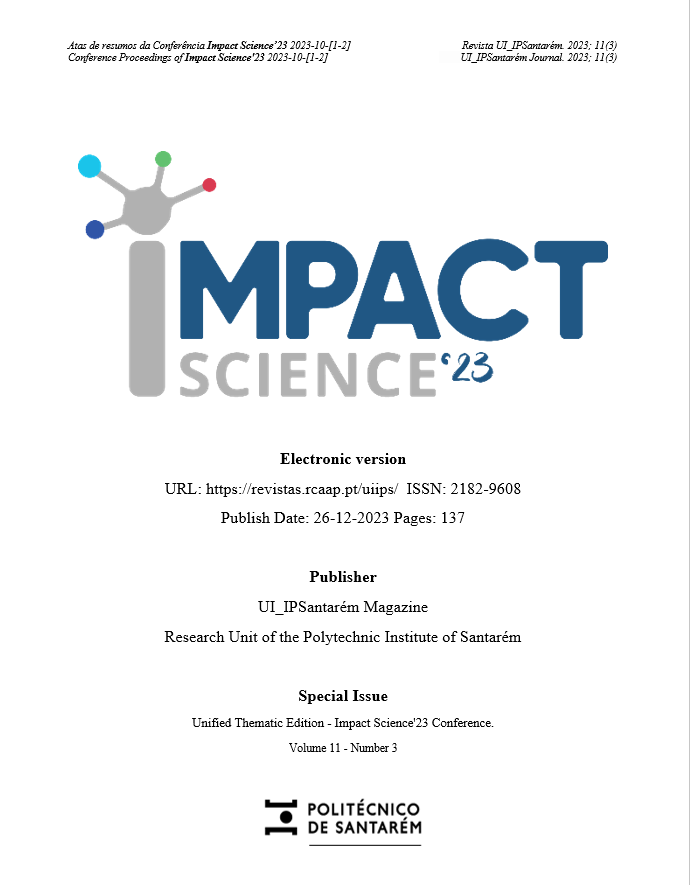Method for identifying activities with accelerometer and magnetometer of mobile devices: A proposal for analyzing the collected data
DOI:
https://doi.org/10.25746/ruiips.v11.i3.32366Keywords:
Activities of Daily Living, Accelerometer and Magnetometer, Artificial Intelligence, Health and Physical Exercise, Sensors, Data Fusion and Classification and Data ProcessingAbstract
INTRODUCTION:
The detection of physical activities through the fusion of accelerometer and magnetometer data from mobile devices is of great importance in various applications such as health monitoring, fitness tracking, and movement analysis. The objective of this study is to merge data related to five physical activities, such as going up stairs, down stairs, walking, standing still, and running, using data acquired with the accelerometer and magnetometer in 5-second stretches for the extraction of characteristics of the captured signals and identification of different activities using artificial intelligence methods.
METHODS:
The architecture for the analysis consists of several phases, such as data acquisition, data processing, data cleaning, feature extraction, fusion of the processed data, and application of artificial intelligence methods, such as Adaboost, Naive Bayes, Random Forest, Support Vector Machine (SVM), Neural Networks and CN2 Rule Induction. After calculating the peaks of the signals, the methods were applied based on 15 characteristics of each sensor, such as mean, standard deviation, variance, maximum, minimum, and median of the raw signal, five greatest distances between the highest peaks, and mean, standard deviation, variance and median of the peaks. Artificial intelligence methods were applied with the Orange framework. Stratified 10-fold Cross-validation was applied to validate the models used.
RESULTS:
The results reported by the different methods showed that the Neural Networks method presented an efficiency of 90.14%, an F1-score of 90.13%, a precision of 90.18%, and a Recall of 90.14%. In turn, the Random Forest method reported an efficiency of 90.40%, an F1-score of 90.40%, a precision of 90.44%, and a Recall of 90.40%. Then, the Naive Bayes method presented an efficiency of 80.71%, an F1-score of 80.08%, a precision of 80.54%, and a Recall of 80.71%. Otherwise, the CN2 rule inducer method presents an efficiency of 82.18%, an F1-score of 82.37%, a precision of 82.62%, and a Recall of 82.18%. Next, the Adaboost method reports an effectiveness of 86.28%, an F1-score of 86.24%, an accuracy of 86.21%, and a recall of 86.28%. Finally, the SVM method presents an efficiency of 61.73%, an F1-score of 60.59%, a precision of 64.03%, and a Recall of 61.73%.
DISCUSSION:
Thus, of the different methods presented, the method that presents the best results is the Random Forest method, and the second best method is the Adaboost method, but it requires more processing capacity. Data fusion proved effective with these 2 sensors to improve results. Still, a larger dataset should be used to overcome some problems in recognition due to the variety of data.
CONCLUSION:
In summary, the fusion of accelerometer and magnetometer data in mobile devices plays a key role in the accurate and versatile detection of physical activities. This approach improves the quality of collected information, allows for more advanced analysis, and provides a solid foundation for applications related to health, wellness, and physical activity monitoring.
Downloads
Published
How to Cite
Issue
Section
License
Copyright (c) 2023 Ivan Miguel Pires, Paulo Jorge Coelho, Norberto Jorge Gonçalves

This work is licensed under a Creative Commons Attribution-NonCommercial-NoDerivatives 4.0 International License.
Authors publishing in this journal agree to the following terms:
Authors retain copyright and grant the journal the right of first publication, with the article simultaneously licensed under the Creative Commons Attribution License that allows sharing of the work with acknowledgement of authorship and initial publication in this journal.
Authors are permitted to enter into additional contracts separately for non-exclusive distribution of the version of the article published in this journal (e.g., publish in an institutional repository or as a book chapter), with acknowledgment of authorship and initial publication in this journal.
Authors have permission and are encouraged to publish and distribute their work online (e.g., in institutional repositories or on their personal webpage) at any point before or during the editorial process, as this may generate productive changes, as well as increase the impact and citation of the published work.



